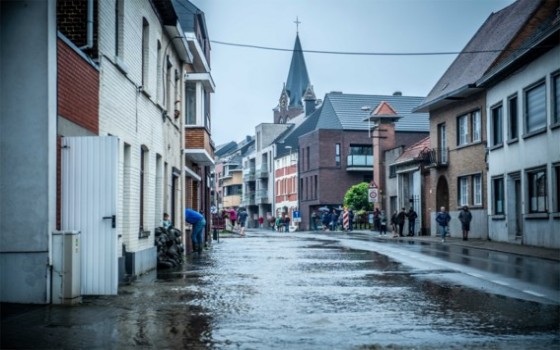
Weather and climate hazards appear in developing countries... 12,000 disasters... two million deaths and $4 trillion in losses over 50 years

- Europe and Arabs
- Tuesday , 23 May 2023 12:32 PM GMT
Brussels - New York: Europe and the Arabs
More than two million deaths and $4.3 trillion in economic losses. That's the bill for extreme weather events charged with man-made global warming over half a century, according to the World Meteorological Organization.
The organization said on Monday that hazards related to weather, climate and water caused nearly 12,000 disasters between 1970 and 2021. Developing countries have been hardest hit, with 90 percent of the deaths and 60 percent of the economic losses caused by climate shocks and extreme weather patterns. According to the United Nations news bulletin, of which we received a copy this morning
The World Meteorological Organization said LDCs and SIDS suffer high costs that are "disproportionate" to the size of their economies.
"Unfortunately, the most vulnerable communities bear the brunt of weather, climate and water-related risks," said FAO Secretary-General Petteri Taalas.
Amazing tolerances
The organization confirmed that the numerous disasters that have afflicted the least developed countries over the past half century have caused economic losses of up to 30 percent of the gross domestic product.
In small island developing states, one in five disasters had an impact of "more than five percent" of GDP, while some disasters wiped out entire countries' GDP.
Asia had the highest death toll from extreme weather and water-related phenomena over the past 50 years, with close to 1 million deaths - more than half of them in Bangladesh alone.
In Africa, the World Meteorological Organization said droughts accounted for about 95 percent of the 733,585 deaths from climate disasters.
Early warnings save lives
However, the organization stressed that improved early warnings and coordinated disaster management had helped mitigate the lethal effects of disasters, and Mr. Taalas stressed that such warnings "save lives".
The UN agency said that the recorded deaths for the years 2020 and 2021 were lower than the average for the previous decade.
Mr. Talas cited Cyclone Mocha, which caused widespread devastation last week in coastal areas of Myanmar and Bangladesh and hit "the poorest of the poor", noting that similar disasters in the past had caused "tens and even hundreds of thousands of deaths" in both countries.
"Thanks to early warnings and disaster management, these catastrophic death rates are a thing of the past," he added.
"easy reach"
The organization had previously shown that just 24 hours' warning of an imminent climate threat could cut damages by 30 per cent, describing early warnings as "fair" for adapting to climate change because of their tenfold return on investment.
WMO has released its new findings on the human and economic cost of disasters caused by weather events as it opens the World Meteorological Congress in Geneva. The conference, which is held every four years, will focus on the implementation of the United Nations Early Warnings for All initiative.
Leave no one behind
The initiative aims to ensure that early warning services reach all people around the world by the end of 2027. It was launched by United Nations Secretary-General António Guterres at the Sharm el-Sheikh Climate Change Conference (COP27) in November last year.
Currently, early warning systems cover only half of the world's countries, with small island developing states and least developed countries lagging behind.
Last March, the Secretary-General convened the heads of UN agencies and partners to accelerate the implementation of the Early Warnings for All initiative.
The first cohort, slated to start implementing the initiative in 2023, includes 30 particularly vulnerable countries - almost half of which are in Africa.












No Comments Found